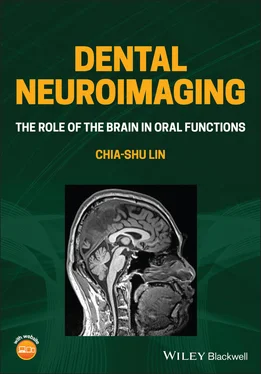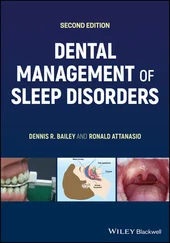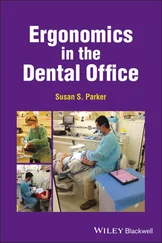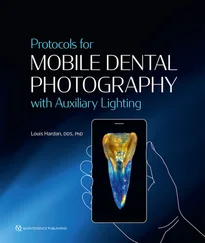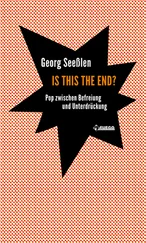Chia-shu Lin - Dental Neuroimaging
Здесь есть возможность читать онлайн «Chia-shu Lin - Dental Neuroimaging» — ознакомительный отрывок электронной книги совершенно бесплатно, а после прочтения отрывка купить полную версию. В некоторых случаях можно слушать аудио, скачать через торрент в формате fb2 и присутствует краткое содержание. Жанр: unrecognised, на английском языке. Описание произведения, (предисловие) а так же отзывы посетителей доступны на портале библиотеки ЛибКат.
- Название:Dental Neuroimaging
- Автор:
- Жанр:
- Год:неизвестен
- ISBN:нет данных
- Рейтинг книги:4 / 5. Голосов: 1
-
Избранное:Добавить в избранное
- Отзывы:
-
Ваша оценка:
- 80
- 1
- 2
- 3
- 4
- 5
Dental Neuroimaging: краткое содержание, описание и аннотация
Предлагаем к чтению аннотацию, описание, краткое содержание или предисловие (зависит от того, что написал сам автор книги «Dental Neuroimaging»). Если вы не нашли необходимую информацию о книге — напишите в комментариях, мы постараемся отыскать её.
Provides the latest neuroimaging-based evidence on the brain mechanisms of oral functions Dental Neuroimaging: The Role of the Brain in Oral Functions
Dental Neuroimaging: The Role of the Brain in Oral Functions
Dental Neuroimaging — читать онлайн ознакомительный отрывок
Ниже представлен текст книги, разбитый по страницам. Система сохранения места последней прочитанной страницы, позволяет с удобством читать онлайн бесплатно книгу «Dental Neuroimaging», без необходимости каждый раз заново искать на чём Вы остановились. Поставьте закладку, и сможете в любой момент перейти на страницу, на которой закончили чтение.
Интервал:
Закладка:
1.2.5.1 Blood‐Oxygen‐Level‐Dependent fMRI
The blood‐oxygen‐level‐dependent (BOLD) fMRI detects the changes in the proportion of deoxygenated and oxygenated haemoglobin in the brain. This metabolic event (i.e. oxygenation of haemoglobin) is further associated with neural activity. Firstly, the brain region with increased neural activity is associated with more energy consumption, i.e. for synaptic activity. Secondly, oxygen consumption is associated with increased CBF and changes in cerebral vessel volume, leading to an over‐supply of the oxygenated vs. deoxygenated haemoglobin (see Section 2.2). Finally, deoxygenated haemoglobin shows a paramagnetic property that disturbs the local magnetic field and decreases the MR signal (Thulborn et al. 1982). A higher MR signal reflects the effect of an increased proportion of oxygenated vs. deoxygenated haemoglobin, i.e. the BOLD effect, coupled with increased neural activity. In a task‐based fMRI study, researchers can infer that a mental function is associated with a specific brain region by identifying changes in the BOLD signal in the brain region. Therefore, the discovery of the BOLD effect is essential for brain mapping, i.e. to map the location of brain activation associated with functions (Jenkinson and Chappell 2018).
1.2.5.2 Perfusion MRI – Arterial Spinning Labelling
A major limitation of the BOLD fMRI (also see Section 2.1) is that the BOLD signal should be interpreted in a relative sense, as the difference of brain signals between different conditions. The value from fMRI data per se cannot be directly referred to the actual neural activity. Some factors other than neural activity, e.g. CBF or vessel volume, may influence the BOLD signal. Perfusion MRI, in contrast, assesses the delivery of cerebral blood and provides a quantitative measure that can be linked to the actual state of blood perfusion by the unit ml/100 g/min for the volume of blood passing 100 g of tissue within one minute (Jenkinson and Chappell 2018). The basic concept of perfusion MRI is to label part of the blood flow and detect the labelled marker after a fixed time delay. Then, the change of the labelled content against time can be quantified. In arterial spinning labelling (ASL), water molecules are used as an intrinsic marker. In ASL‐MRI, labelling is achieved by altering the magnetic properties of the hydrogen nuclei (i.e. their spinning behaviour) using different radiofrequency. Because changes in CBF can be a critical characteristic of neurological disorders, perfusion MRI has become an important tool for diagnosing neurodegenerative disorders, tumours and migraines (Telischak et al. 2015).
1.2.6 General Considerations of the Limitations of Neuroimaging Methods
Though most of the neuroimaging methods have been developed for decades, their application has some limitations. One of the most critical considerations for all imaging methods is the spatial and temporal resolution of imaging. For both structural and functional neuroimaging methods, a poor spatial resolution renders it hard to localize the precise position of a specific brain region. The problem of low spatial resolution is significant in PET, which investigates the brain by a voxel sized between 5 and 10 mm 3(Gazzaniga et al. 2019). Therefore, it provides spatial information at the scale of gross anatomy. However, by using different radioactive neurochemical agents, PET can detect the part of the brain which specifically engages with the agents. The problem of lower spatial resolution is also significant in magnetic resonance spectroscopy (MRS). Because MRS signals are relatively weak, to increase the signals obtained in a voxel, a larger voxel will be required for an MRS scan (Gazzaniga et al. 2019). Due to the limitation of spatial resolution, neuroimaging methods provide less information about brain features at the cellular level.
Temporal resolution is a critical factor for functional neuroimaging. For functional studies, the fundamental question would be ‘do we have a fine resolution to capture the mental functions we desire to see?’. Some mental processes may last for minutes, such as the feeling of a bad mood. In contrast, some mental processes may arise transiently, such as shifting one's attention from one thing to another. Therefore, selecting a tool that is also fast enough to capture the different mental experiences is very crucial. MRI is limited at its temporal resolution due to the longer scanning interval (i.e. a lower sampling rate, such as two seconds for a scan) and the ‘sluggish’ hemodynamic response. In contrast to MRI, EEG and MEG are more sensitive to a quick mental process, with a temporal resolution in milliseconds (Gazzaniga et al. 2019). Further considerations of the pros and cons of MRI are outlined in Section.
1.2.7 Summary
The brain and mental functions, sometimes metaphorized as a ‘black box’, can hardly be examined directly at the chairside. Therefore, a pivotal step to facilitate the investigation of the brain is to develop the technology for quantifying brain structure and functions.
Neuroimaging is a non‐invasive approach that visualizes the CNS, especially the brain.
One of the major goals of using structural MRI is to investigate the morphology, including the size and shape, of the anatomical structure of the brain.
The functional MRI methods investigate the brain signals associated with brain functions, including BOLD fMRI and perfusion MRI.
The BOLD fMRI detects the changes in the proportion of deoxygenated and oxygenated haemoglobin in the brain. This metabolic event is indirectly associated with neural activity.
1.3 How Does Neuroimaging Contribute to Clinical Practice?
1.3.1 Introduction
How can neuroimaging contribute to dental practice? Intuitively, it is hard to imagine that the knowledge of ‘brain activation’ would contribute anything for dentists to complete a Class II cavity restoration. However, the functional perspective of the brain–stomatognathic connection ( Figure 1.1) highlights the association between the brain, mental functions and oral functions. Therefore, understanding the brain is the key to understanding the individual variation in oral functions and feeding and oral healthcare behaviour. In the following sections, we elaborate this association by examples of dental neuroimaging studies. Firstly, we discuss the contribution of neuroimaging to oral neuroscience. Secondly, we discuss the contribution of neuroimaging to the clinical disciplines of dentistry.
1.3.2 Links Between Neuroimaging and Key Issues of Oral Neuroscience
As a new discipline of neuroscience, how does neuroimaging help investigate these key issues of oral neuroscience? Table 1.2shows that neuroimaging research has been engaged with all the key issues in oral neuroscience (Iwata and Sessle 2019). For example, in terms of the pathway of pain processing, neuroimaging research extended our understanding of the circuitry from the spinal mechanism to brain mechanisms, showing cortical and subcortical activation associated with acute and chronic orofacial pain (Brügger et al. 2012; Gustin et al. 2011) and complicated mechanisms of pain modulation (Desouza et al. 2013; Gustin et al. 2012; Moayedi et al. 2012; Younger et al. 2010). Importantly, because neuroimaging research is conducted in human subjects, psychosocial factors, such as emotional and attentional factors related to pain, can be investigated (Weissman‐Fogel et al. 2011; Abrahamsen et al. 2010; Youssef et al. 2014). Neuroimaging also helps to reveal the brain mechanism of swallowing and chewing (Lowell et al. 2012; Quintero et al. 2013). Notably, by directly assessing the dental patients who received treatment, translation between clinical practice (e.g. installation of denture prosthesis) and neuroscience can be achieved (Kimoto et al. 2011; Luraschi et al. 2013). Also, the perceptual processing of oral functions, which relies on self‐reports from human subjects, including tactile and gustatory senses, can be studied using neuroimaging (Nakamura et al. 2011; Trulsson et al. 2010). As an in vivo imaging method, neuroimaging has become the crucial method for studying the perceptual and psychosocial aspects of oral functions, which are difficult to approach with animal models.
Читать дальшеИнтервал:
Закладка:
Похожие книги на «Dental Neuroimaging»
Представляем Вашему вниманию похожие книги на «Dental Neuroimaging» списком для выбора. Мы отобрали схожую по названию и смыслу литературу в надежде предоставить читателям больше вариантов отыскать новые, интересные, ещё непрочитанные произведения.
Обсуждение, отзывы о книге «Dental Neuroimaging» и просто собственные мнения читателей. Оставьте ваши комментарии, напишите, что Вы думаете о произведении, его смысле или главных героях. Укажите что конкретно понравилось, а что нет, и почему Вы так считаете.
